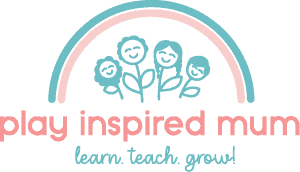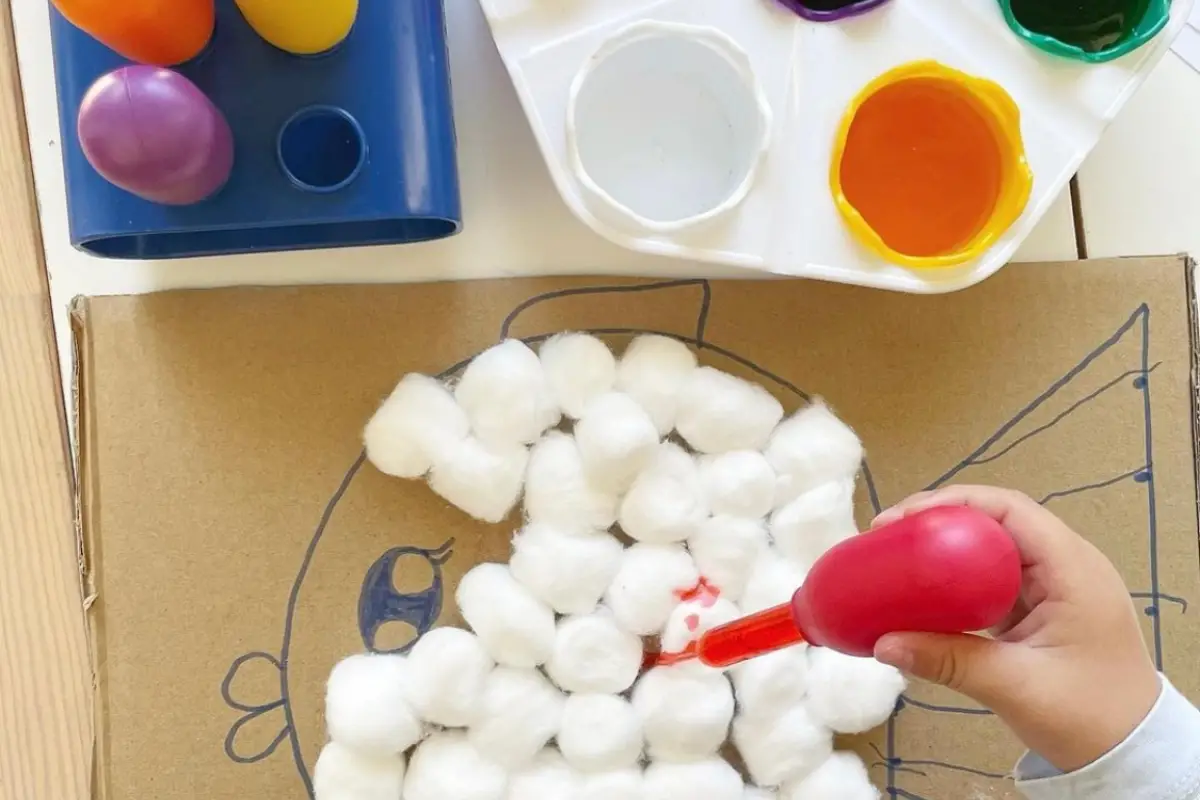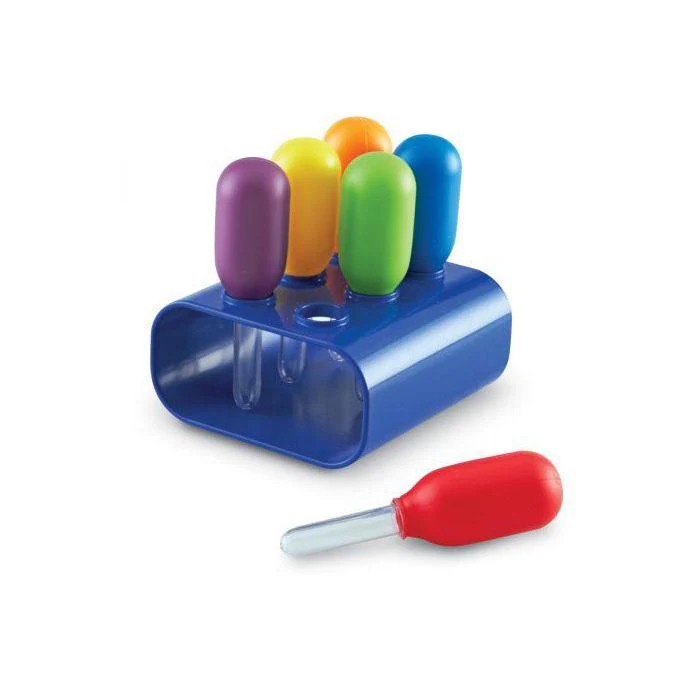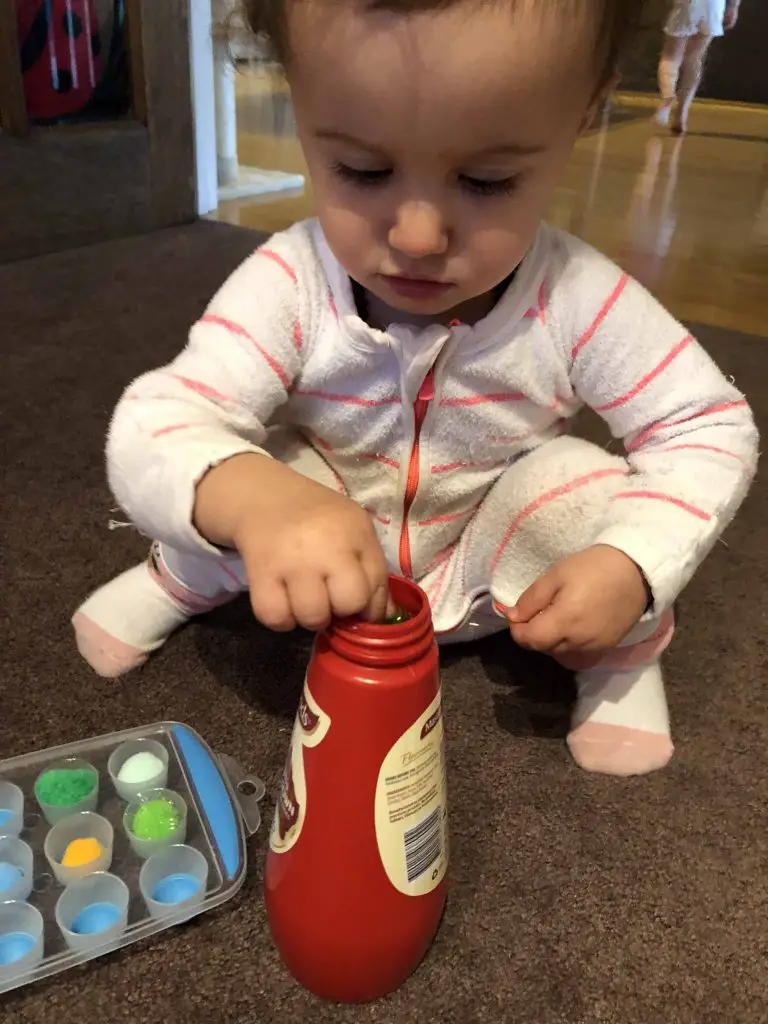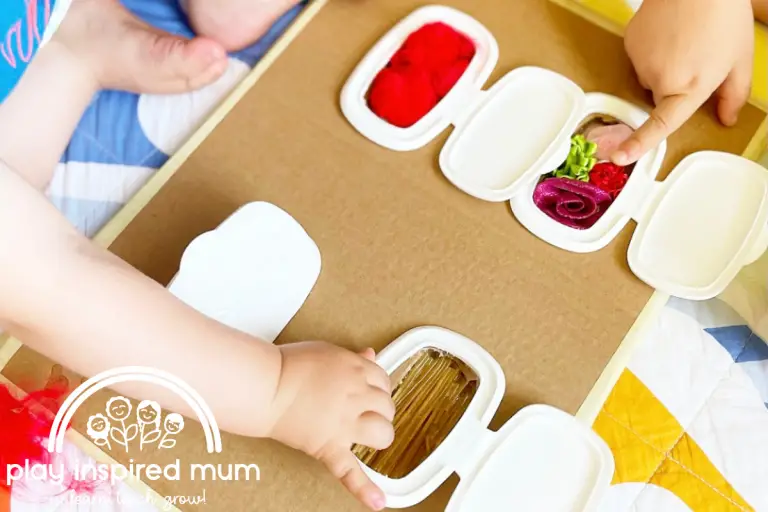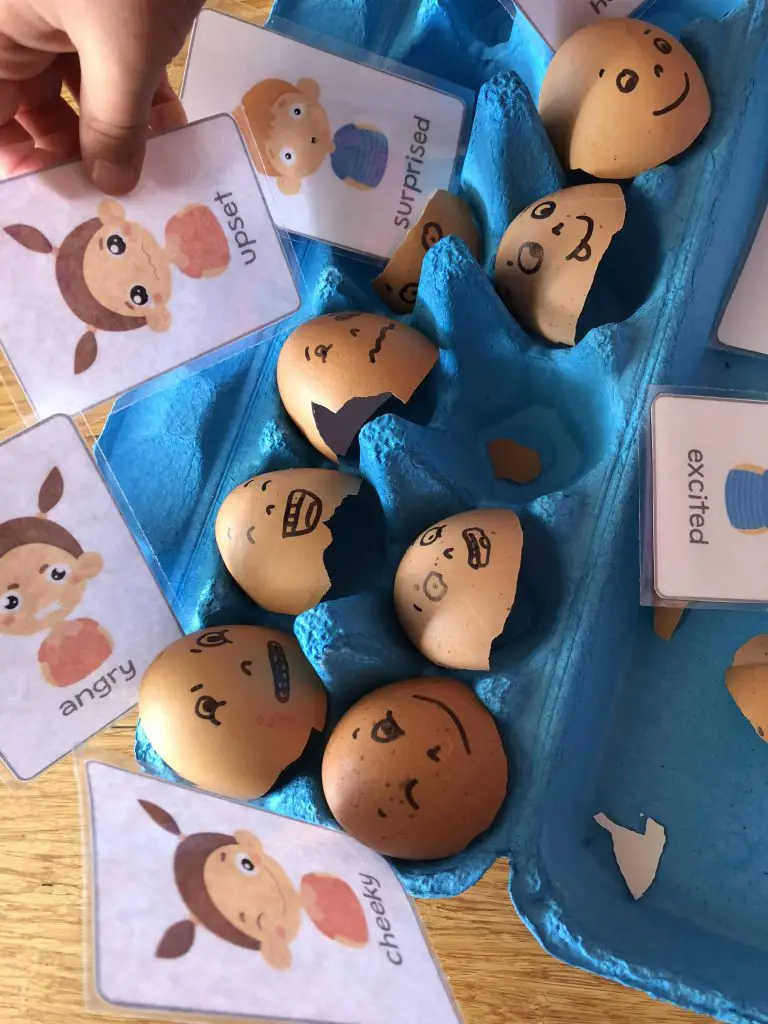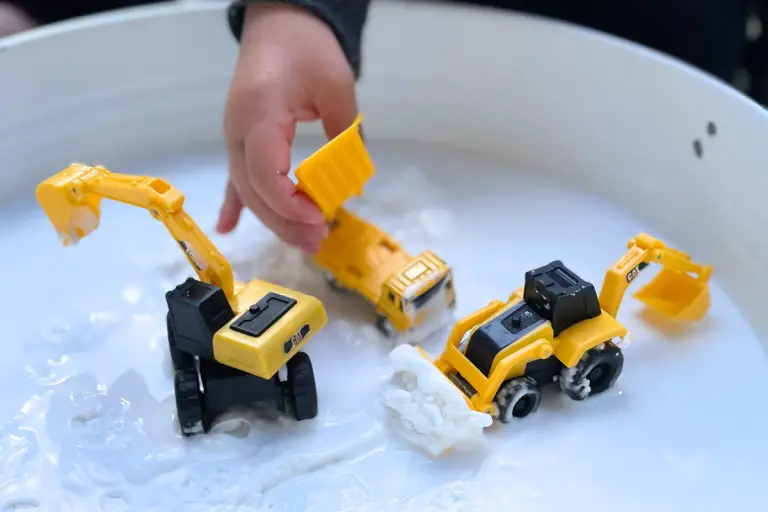Splashing Fun: Cotton Ball Fish Activity for Toddlers
Disclosure: This blog contains affiliate links which I may earn a small commission from if you purchase through them, at no extra cost to you.
This cotton ball fish activity is a great way to fill a spare half hour using resources that you likely have at home already.
It is a perfect activity that proves simple can be the most engaging.
All three of my kids have loved this easy set up fine motor activity.
They love using the droppers and watching the fluid flow through the cotton, watching the colours bleed together.
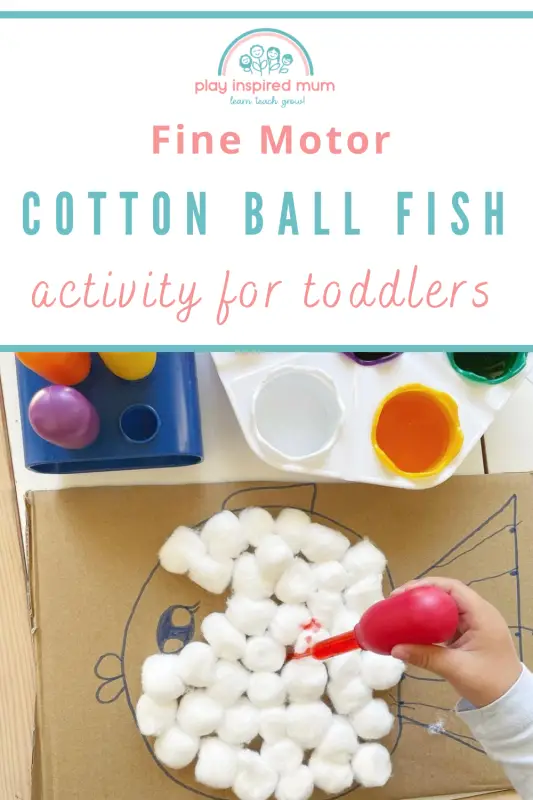
Cotton Ball Fish Activity for Toddlers
I’ve always looked for ways to make learning engaging and fun for toddlers.
That’s why I created a fine motor activity that not just entertains but educates — the cotton ball fish art idea.
This ingenious activity leverages simple materials like pipettes, coloured water, and food colouring to challenge and develop fine motor skills.
At its heart, this project goes beyond creating a vibrant rainbow fish on a recycle-friendly cardboard base.
It’s a playful journey that marries the joy of art with the critical task of enhancing toddlers’ fine motor skills.
Through this task, little ones dip their toes into a sea of colours, learning to grasp and squeeze pipettes.
These are a crucial step in mastering fine motor control.
The delightful aspect is watching them light up as they see their rainbow fish come to life, a testament to how fun and learning can swim together in harmony.
Why Focus on Fine Motor Skills?
Developing fine motor skills in early childhood lays the foundation for a plethora of essential daily activities.
These skills involve the use of small muscles in the hands and fingers, critical for tasks like writing, buttoning, and cutting.
I’ve found that engaging toddlers in fine motor activities, such as the cotton ball fish project, can significantly boost their coordination and precision.
By manipulating small objects, toddlers strengthen their dexterity and hand-eye coordination in a playful and vibrant setting.
It’s fascinating to see how a simple art idea involving cotton balls, pipettes, and coloured water can transform into a powerful tool for developmental growth.
These activities not only prepare children for academic challenges but also encourage them to explore and understand their environment in creative ways.
Gathering Your Materials
Let’s dive into what you’ll need for a splash of creativity and learning with our little ones.
Cotton balls lay the foundation for our fluffy fish.
They’re the first item on the list.
I found that a simple cardboard base, maybe from a box we’d usually recycle, provides the perfect canvas.
Remember, encouraging recycling not only helps the planet but also instils a valuable lesson in our children.
Now, for the magic touch, we grab a pipette and some coloured water.
Mixing water with a bit of food colouring gives us a vibrant palette to work with.
This combination of items bridges art with fine motor activities in a way that’s both stimulating and developmental for toddlers.
Creating Your Rainbow Fish
I gathered cotton balls, a cardboard base, pipettes, and water tinted with food colouring.
First, I arranged the cotton balls on the cardboard, shaping them into a rainbow fish.
This was my foundation.
Next, I diluted food colouring in water to create vibrant hues.
Each colour got its own container, ensuring variety for my aquatic masterpiece.
With a pipette in hand, I carefully picked up the coloured water.
I found joy in dropping the liquid onto the cotton balls.
They absorbed the colours, transforming into scales of rainbow hues.
This fine motor activity was not just about creating art; it encouraged precision and control.
The pipette and coloured water, acting as my brush and paint, allowed me to express creativity while enhancing fine motor skills.
Through this simple act of art creation, I recycled materials, celebrated imagination, and crossed the midline in a whirl of colour and fun.
Encouraging Creativity and Imagination
Art activities stand at the forefront of sparking creativity and imagination in toddlers.
They dive into a world where everything, from cotton balls to a pipette dripping with coloured water, holds the potential for creation.
The simple act of transforming a cardboard base into a vibrant rainbow fish teaches our little ones that art isn’t just about the outcome.
It’s the process of exploring colours, textures, and techniques.
I’ve seen eyes light up with wonder as the merging hues on cotton balls craft a masterpiece unique to each child’s vision.
For a twist on the theme, we’ve ventured beyond the aquatic realm, creating everything from cotton ball clouds in a recycled material sky to fanciful creatures of their own making.
This fine motor activity doesn’t just develop skills.
It opens up a sea of possibilities for their budding imaginations.
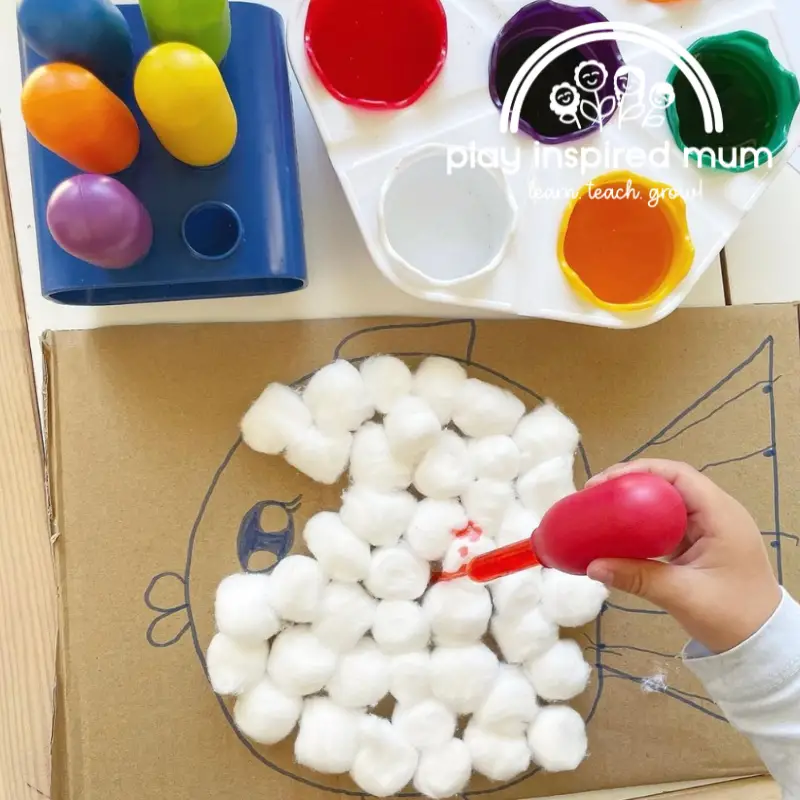
Safety Tips & Clean Up
I needed to focus on a few crucial steps to ensure safety during our cotton ball fish adventure.
First, I made sure the workspace was on a flat surface to avoid spills.
Food colouring, after all, can stain.
I also kept a close eye on my toddler to ensure the small items, like the pipette, didn’t pose a choking hazard.
Clean-up was a breeze with a bit of foresight.
I laid down newspapers under our cardboard base to catch drips of coloured water.
This move made tidying up as simple as rolling up the paper and recycling it.
For any spills on clothes or skin, I found that washing them out immediately with soap and water did the trick.
So, safety and cleanliness during this fine motor activity were manageable with these steps, letting us focus on the fun of creating our rainbow fish.
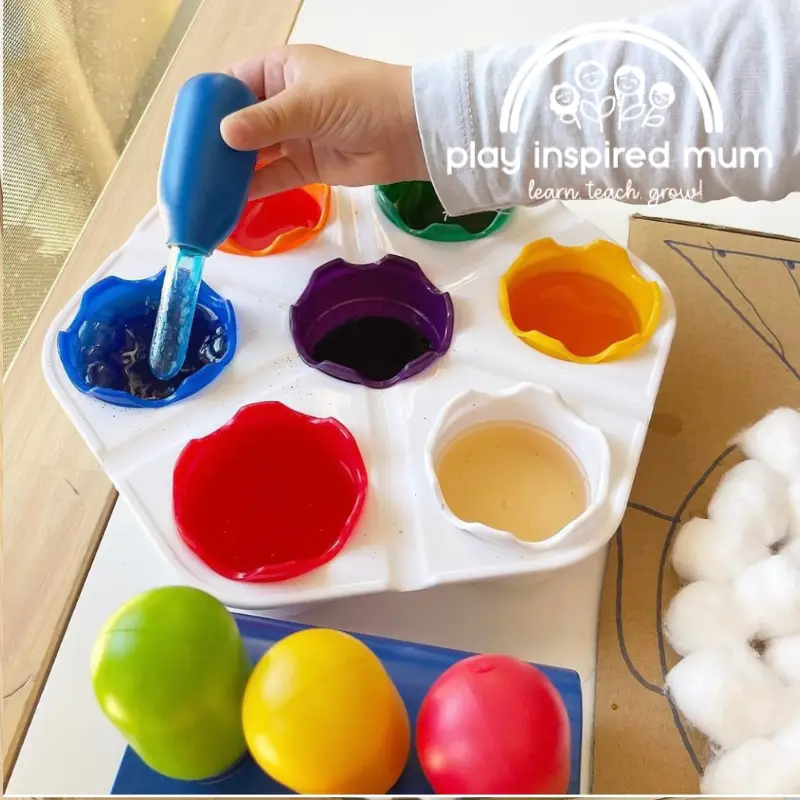
Extending the Activity
We’ve already discovered the joy and developmental benefits of making rainbow fish with cotton balls, coloured water, and a bit of imagination.
I found myself thinking, why stop there?
Let’s ride the wave of creativity further.
Aquatic scenes teeming with life await your child’s tender touch.
Using the same materials – pipettes, cotton balls, food colouring, and cardboard bases, you can guide your child in creating an entire underwater world.
Recycling becomes more than a lesson; it turns into an art form.
Picture cardboard tubes transforming into coral, or old egg cartons becoming treasure chests.
Alongside this, our art idea for toddlers introduces them to vital environmental messages.
They learn about ecosystems through the creatures they create, from the careful placement of cotton ball octopi to the swirling colours of a deep-sea backdrop.
Each activity reinforces the importance of caring for our oceans, blending fine motor skill development with a deeper understanding of crossing the midline tasks and how they aid cognitive growth.
So, let’s dive deeper than before.
More than a fine motor activity, this becomes a gateway to discussions about our world.
We recycle, we imagine, and we create, fostering a sense of responsibility and wonder in the hearts of our little artists.
Crossing the Midline and Other Developmental Benefits
Crossing the midline is an essential developmental skill that involves moving a part of the body, like a hand or foot, across the imaginary line running down the center of the body.
This skill is crucial for tasks ranging from writing to reaching for an object on the opposite side.
Activities that encourage crossing the midline, such as reaching out with a pipette filled with coloured water to paint cotton balls, not only bolster coordination but also brain communication between the two hemispheres.
By engaging in this fine motor activity with simple materials like cotton balls, food colouring, and a cardboard base, toddlers not only create a stunning rainbow fish but also refine their fine motor skills.
They learn to coordinate their vision with their hand movements, a fundamental skill in reading and writing.
The act of squeezing the pipette and aiming the coloured water requires concentration and precision, aiding in their cognitive development.
This art idea for toddlers does more than recycle cardboard into art; it lays down the building blocks for future learning experiences.
By making learning fun, we set the foundation for eager, lifelong learners.
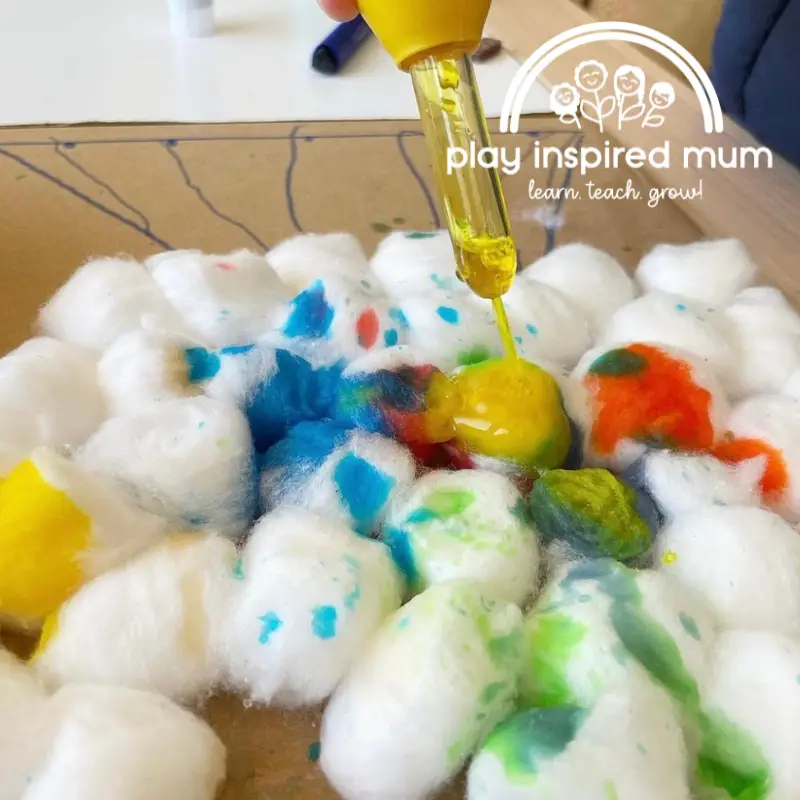
Final Waves of Fun
We’ve sailed through an ocean of adventure, from dabbling in coloured water to crafting our very own rainbow fish.
It’s been a journey filled with splashes of joy and showers of creativity, all while bolstering those crucial fine motor skills.
Our little ones have grasped pipettes with eagerness, exploring the magical transformation of cotton balls into vibrant sea life on a sturdy cardboard base.
They’ve learned the delicate art of balance, coordinating their tiny fingers to manipulate small objects with precision.
This fine motor activity wasn’t just an art idea for toddlers.
It was a voyage into the development of coordination and skill, hidden beneath the guise of playful fun.
But let me tell you, the journey doesn’t end here.
The sea is vast, and there are countless wonders yet to be discovered.
I urge you to recycle those bits and pieces you find around the house and plunge into the depths of imagination and creativity once more.
Engaging in activities like these, you’re not just crafting art; you’re fostering a world of learning and growth.
Whether it’s creating different aquatic animals or painting with every colour of the rainbow, you’re helping your child cross new milestones, including the invaluable skill of crossing the midline.
So, keep those cotton balls, pipettes, and food colouring handy for your next artistic expedition.
As we anchor our cotton ball fish, remember, the waves of fun don’t have to subside.
Let this be one of many splendorous activities that sprinkle your days with laughter and learning.
A gentle reminder that sometimes, the best learning comes through play.
Here’s to many more days filled with colour, creativity, and the joyous crossing of fine motor milestones.
